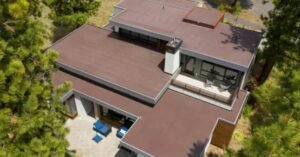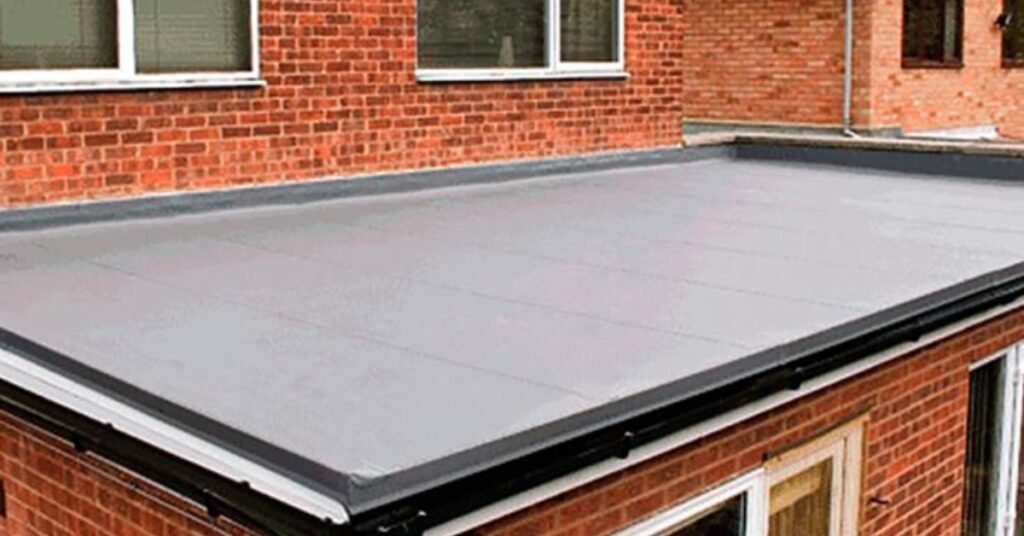Such kinds of roofs as flat ones, which earlier were not favored, nowadays become preferred by people, choosing houses and offices. What could have caused this shift? Over time, with the advancement in the construction practices, many people have put more inclination towards the construction of flat roofs which are more competent in all aspects of construction.
What Exactly is a Flat Roof?
A low slope roof also referred to as a flat roof means any roof that has less than a 10-degree pitch. Slightly different from the contour that opens down to allow the water to roll off, the flat roofs also use the roof deck to create a technical surface for water shedding.
Some of the types of flat roof systems that are familiar to homeowners and builders today are the built-up roofs, rubber roofs and plastic roofs.
Starting from sustainability up to cost, durability, and aesthetic flexibility, flat roofs address problems that pitched roofs cannot.
Major Benefit of Flat Roofing Systems
Several benefits accrue to flat roof structures in comparison to sloping roofs. This makes flat roof systems ideal for use in most current construction projects.
Some key benefits include:
More space – Flat roofs allow for literal expansion of available space and do not require the depth necessary for sloping roof systems. They also provide areas for patio and rooftop terraces. All this added space is made possible without incurring any extra cost in construction of the structure.
Ease of planning and design – this geometric shape of flat roofing makes the selection of load bearing structures and interior layouts more versatile. This enables architectural creativeness.
Accessibility – Flat roofs are easier and safer with which one can walk and work than on sloped roofs. This makes inspection, maintenance and repairs easier to undertake.
Sustainable – Today’s flat roof constructions provide the opportunity to achieve required insulation values and the integration of photovoltaic systems and green roofs.
Long Term Efficiency – Despite higher first costs, properly constructed flat roofs can last 40 years or more. Overall costs in the long run are also reasonable and any dependent firm will consider this a great deal to tap on the capricious nature of the international market.
Green Roofs
Vegetated gardens roofs offer functions of the ecosystem which include, controlling of storm water and enhanced beautification. Sedums are usually planted and can be drought tolerant and despite their size, they do not need deep planting media.
Solar Roofs
Organic flat roofs can be utilized for producing clean solar electricity through the photovoltaic (PV) mounted on it. Solar roof installation is also easier on the flat roof than on the sloped ones, making them perfect candidates for the solar PV system.
Cool Roofs
Cool colored or specially reflective roof membranes help to reduce the radiation of heat into the building and thus there is less need for an air conditioner. This enhances the comfort of the occupants, cost and energy effectiveness of the building.

Modern Flat Roof Systems constructed:
Although the assembly can have almost no pitch, which is not very common, most have minimal pitches for drainage purposes. Today’s advanced waterproofing membranes and other materials that are used in today’s flat roofs are much better in terms of performance and durability as the earlier designs of flat roofs.
Common assembly methods include:
Built-Up Roofing (BUR)
BUR systems consist of one or more layers of waterproof membranes bonded by hot asphalt or adhesive in one unbroken layer. These assemblies can therefore last for 30-40 years if maintained well as has already been discussed above.
Polyvinyl Chloride (PVC)
PVC roofs are made of a single PVC membrane that has to be heat welded. This is a big bonus for PVC since it makes it suitable for application with more range of roof decks than some other materials. Most types have 20+ year life spans.
Thermoplastic Polyolefin which is abbreviated as TPO
Also TPO systems use a pliable, welded single ply roof membrane composed of thermoplastic Olefin. Resistance to chemical / acids is better and membrane colors such as white reflect heat better making it more durable and energy wise.
The choice of flat roof solution depends on certain needs of the building in question that we are to construct.
When selecting a system, consider:
Structure – An engineer should determine if the current structure will be able to bear the load of a flat roof system and the load from snow or water.
Climate – Local weather conditions and level of UV radiation influences the type of membranes and coatings used.
Purpose – Do you plan to make your flat roof act as a patio, or use it for planting greenery or solar panel support? These uses are accordingly met by specific construction approaches.
Budget – The prices for initial installation may differ greatly depending on the assemblies, as does the longevity of value.
Aesthetics – If the flat roof is going to be apparent, the color and the membrane patterns offer exposure to personal choice based on the owner’s vision.
Although a flat roof may be a good idea for one’s home, some conditions such as areas with very low temperatures that come with heavy snow and or ice should consider one with a steep roof. Due to lack of slope, flow, or gradient, flat roofs rely on melt drain structure to avoid common problems like ponding water.
Residential and commercial structures in areas that experience freezing temperatures throughout the year adopt the installation of metal sloped roofs.
A flat roof also reduces the incorporation of forms such as gables and dormers that are mounted on rooftops. Essentially the flat roof type and its surface can by definition fail to provide more geometric designs for its architectural plans. While flat roofs offer some limitations to exterior design opportunities they provide other opportunities.
Moreover, the flat roofing design performs its function differently and it requires the contractor to use specific construction methods and types of roofing installation materials. Selecting immature contractors or improper materials will cause leakage, ponding water, and other problems in terms of function.
FAQs
How often does a flat roof require replacement or repairs?
Only high-quality flat roof structures that have been put up correctly are expected to last as long as two or four decades, along with timely maintenance and the excellence of the used materials. This is why annual inspections are done so that in case of small repair needs they can be attended to before quails of premature failure sets in.
Flat roofs, do more need to be maintained as when compared to those with slope?
Annual cost is not much more compared to pitched roofs: however, that is because flat roofs require far more maintenance on a regular basis. Other means/maintenance, involve, inspect and/repair membranes, flashings, drainage as well as removing debris/vegetation.
Can one transform the existing sloped roof into a flat roof?
Indeed, in some cases, an engineer can answer whether your structure will withstand the load, and which modification method is better. Sheathing decisions may range from slope reduction, over framing, or slope tear-off and new construction as permitted by the site.



